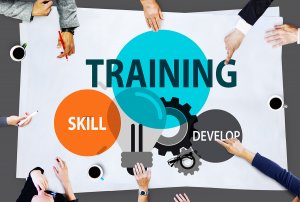 There are many “myths” which have grown up around good learning strategy and training design. It can be hard to know which of these are valid and which ones are simply not true. In this blog we look at the research into neuroscience to help identify truth from fiction.
There are many “myths” which have grown up around good learning strategy and training design. It can be hard to know which of these are valid and which ones are simply not true. In this blog we look at the research into neuroscience to help identify truth from fiction.
When sourcing a training programme companies often start by specifying the number of days they want to allocate to the training and what they want included.
A typical example of an email enquiry for training might go something like this:
“We want to run an intensive, challenging course for a number of managers who are new to the role. We want to cover everything you have on your three day management course but we only want to have a one day course.”
This initial specification makes my heart sink as it almost guarantees that if the customer goes ahead with sourcing this type of training then the course will achieve at best little and at worst stressed delegates who have learned absolutely nothing. It is this type of “training” that gives training companies a bad name!
Companies do not want to waste money on training that isn't going to be effective, so what can neuroscience teach us in terms of designing an effective training course?
All of the research into how the human brain functions tells us that cramming too much into a short time frame actually reduces rather that improves learning. In addition, when people in a learning situation perceive themselves to be in direct competition with their fellow delegates then this can also interfere with learning.
According to research by Jessica Payne from the University of Notre Dame, the human brain learns best when it is in a good mood, is mildly stressed, and is not over-tired.
Negative emotions are known to increase physiological arousal, narrow focus and restrict behaviour. Research by Barbara Fredrickson showed that a broader focus of attention was achieved when people were in a positive mood and that this allowed them to be more creative and give flexible responses – all of which are essential for true learning.
Research has shown that the ideal conditions for learning are created when there is a balance between the level of challenge in a situation and the learner's perceived ability to carry this challenge out. In these conditions learners are in what is known as “optimal flow state” and their rate of learning is at its highest.
If the challenge is too low, then people coast. But if it is too high, then they panic. Putting people under too much stress also reduces memory retention of neutral facts, such as the background details.
So, in any development or training programme, the delegate’s stress levels need to be managed to the point of optimal flow. This means designing exercises that stretches the learners just beyond their comfort zone.
Being in a good, positive mood has been shown to improve people’s problem solving ability. A recent laboratory experiment, which is also supported by Beeman’s research on problem solving and his so-called “Aha” moments, showed that people solved 10% more problems and solved 20% more of them through insight when they arrived with (or were put into) a good positive mood prior to the problem solving test.
Are you sourcing training where there is sufficient time for delegates to learn? Where the atmosphere is one in which people are both challenged and supported and where they can have some fun whilst they’re doing so? And where they know that they, and your organisation, will benefit from the learning? All of Spearhead's courses meet this criteria.
